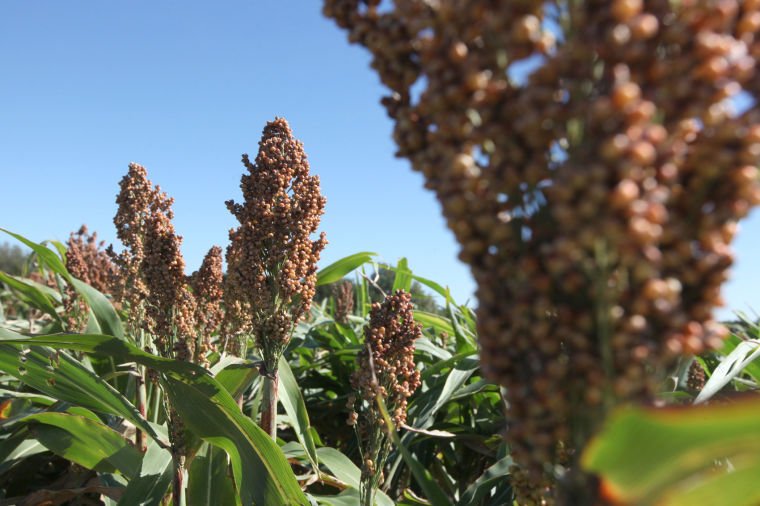
Currently, food-grade sorghum accounts for only 3 percent of the grain sorghum grown in the United States, but it’s a niche market that continues to grow, said Doug Bice, director of high-value markets with the National Sorghum Checkoff.
Sure, the market might not mean much for Kansas’ staple crop of wheat, a celiac’s nemesis, as Kansas grows more wheat than any other state in the nation. But Kansas also leads the nation in grain sorghum production – a crop for which proponents like Bice have been working to expand markets both internationally and domestically.
For years, however, milo hasn’t been as popular as other crops, including corn, which garnishes more research dollars and private investment. Yet there are signs of growth for the primeval crop. For starters, sorghum is more drought-tolerant than corn – using about half the water – which makes it a viable alternative to help with the state’s declining Ogallala Aquifer in western Kansas.Bice said checkoff dollars are now going to crop improvement, renewable fuels and other avenues for sorghum.For instance, he said, sorghum is used to make products like packing peanuts, wall board insulation and kitty litter.Meanwhile, while sorghum has long been in use domestically for the feed and fuel industry, in the past few years international markets have opened for sorghum, largely in China, which is purchasing it to feed livestock, including poultry.Higher corn prices forced China to begin purchasing U.S. sorghum, with the first shipment arriving in fall 2013.Bice said China now is opening its markets to Argentina sorghum, largely because of the short U.S. supply, which will create competition for U.S. farmers.Bice said they are only one-quarter into the marketing year, but already two-thirds of the crop that was exported last year has been shipped out.“Even if they took all the sorghum in the United States, we could not feed all the ducks in China,” he said.Now, sorghum is the latest trend in the food industry. While less than 1 percent of Americans are diagnosed with celiac disease, countless others contend they are “gluten-sensitive” and are taking gluten out of their diet.The gluten-free market size was just $0.6 billion in 2004, according to Packaged Facts. By 2012, gluten-free food and beverages reached $4.2 billion and are poised to grow to nearly $6 billion next year.
by Amy Bicke
Source: Crop has international demand as gluten-free market grows – The Hutchinson News: Local/State News

